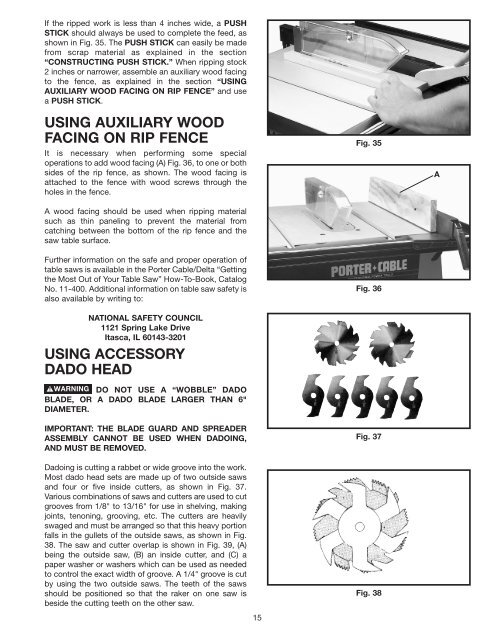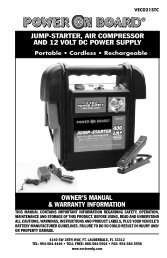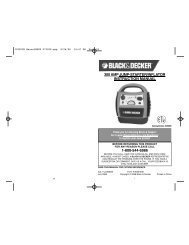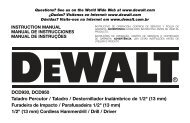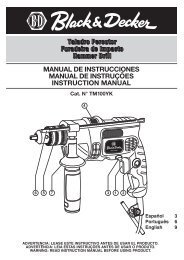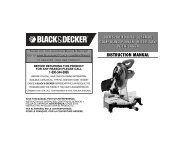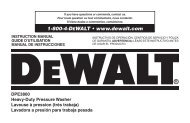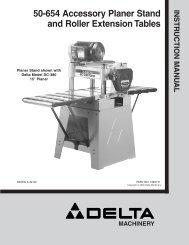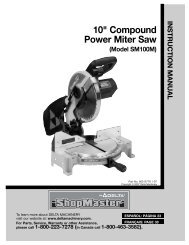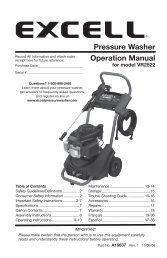Double Insulated 10" Bench Top Table Saw Instruction Manual
Double Insulated 10" Bench Top Table Saw Instruction Manual
Double Insulated 10" Bench Top Table Saw Instruction Manual
- No tags were found...
You also want an ePaper? Increase the reach of your titles
YUMPU automatically turns print PDFs into web optimized ePapers that Google loves.
If the ripped work is less than 4 inches wide, a PUSHSTICK should always be used to complete the feed, asshown in Fig. 35. The PUSH STICK can easily be madefrom scrap material as explained in the section“CONSTRUCTING PUSH STICK.” When ripping stock2 inches or narrower, assemble an auxiliary wood facingto the fence, as explained in the section “USINGAUXILIARY WOOD FACING ON RIP FENCE” and usea PUSH STICK.USING AUXILIARY WOODFACING ON RIP FENCEIt is necessary when performing some specialoperations to add wood facing (A) Fig. 36, to one or bothsides of the rip fence, as shown. The wood facing isattached to the fence with wood screws through theholes in the fence.A wood facing should be used when ripping materialsuch as thin paneling to prevent the material fromcatching between the bottom of the rip fence and thesaw table surface.Further information on the safe and proper operation oftable saws is available in the Porter Cable/Delta “Gettingthe Most Out of Your <strong>Table</strong> <strong>Saw</strong>” How-To-Book, CatalogNo. 11-400. Additional information on table saw safety isalso available by writing to:NATIONAL SAFETY COUNCIL1121 Spring Lake DriveItasca, IL 60143-3201USING ACCESSORYDADO HEADDO NOT USE A “WOBBLE” DADOBLADE, OR A DADO BLADE LARGER THAN 6"DIAMETER.IMPORTANT: THE BLADE GUARD AND SPREADERASSEMBLY CANNOT BE USED WHEN DADOING,AND MUST BE REMOVED.Dadoing is cutting a rabbet or wide groove into the work.Most dado head sets are made up of two outside sawsand four or five inside cutters, as shown in Fig. 37.Various combinations of saws and cutters are used to cutgrooves from 1/8" to 13/16" for use in shelving, makingjoints, tenoning, grooving, etc. The cutters are heavilyswaged and must be arranged so that this heavy portionfalls in the gullets of the outside saws, as shown in Fig.38. The saw and cutter overlap is shown in Fig. 39, (A)being the outside saw, (B) an inside cutter, and (C) apaper washer or washers which can be used as neededto control the exact width of groove. A 1/4" groove is cutby using the two outside saws. The teeth of the sawsshould be positioned so that the raker on one saw isbeside the cutting teeth on the other saw.15Fig. 35Fig. 36Fig. 37Fig. 38A


